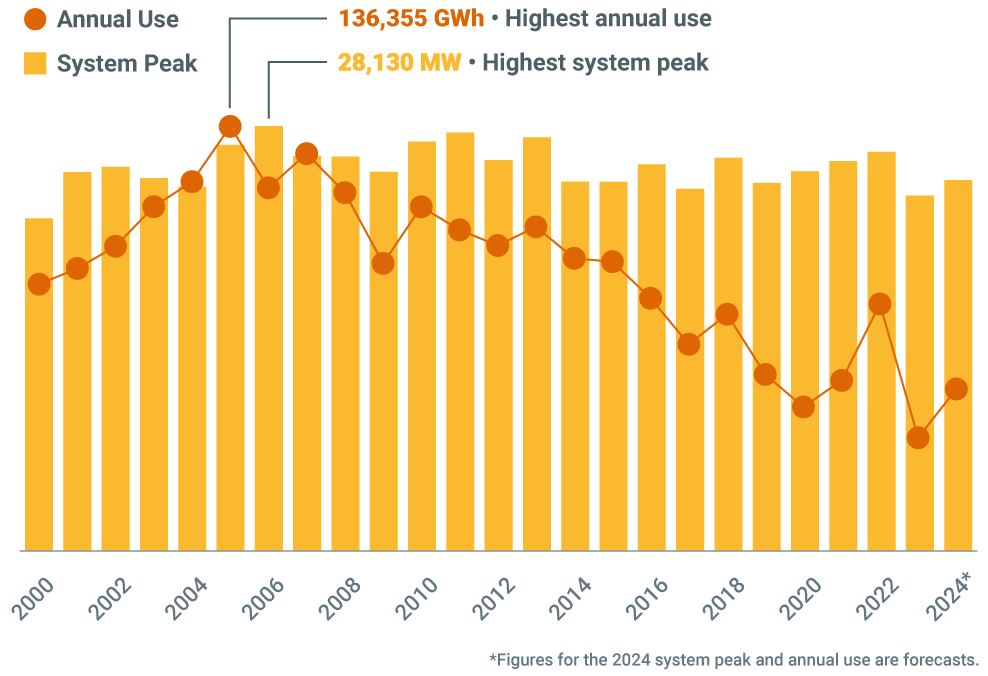By GARRY RAYNO, InDepthNH.org
CONCORD — The operator of New England’s electric grid, says it should have enough power this summer under normal conditions, but warns climate change has made the region’s weather more volatile and less predictable.
ISO-New England officials said Monday it has ample supplies of electricity to satisfy the estimated need during normal weather, at more than 30,000 megawatts, but a prolonged heat wave with high humidity could challenge the system.
“If it is zero out it is cold, if it’s 90 degrees out it is hot, that is still one of the biggest drivers for our demand is what the temperature is,” said Michael Fontaine, supervisor of operations forecasting. “There can be just as much as one degree change in temperature that can impact the load it would demand in New England significantly, by half a gigawatt or more and that’s a big significant change, which changes the way generation has to respond.”
He said the amount of humidity is very important as it makes air conditioners work harder, drawing more electricity.
Although the overall use of electricity has fallen due to energy efficiency measures, the annual peaks for highest load have not, the company says.
Also impacting the amount of electricity use is the more than 7,000 megawatts produced by solar panels installed in recent years, both reducing the peak load, and moving the summer peak from the hottest period of the day in early afternoon when the solar panels are most productive, to early evening when the panels as less productive as the sun is lower in the sky, officials say.
ISO New England is the independent, not-for-profit corporation responsible for keeping electricity flowing across the six New England states and ensuring that the region has reliable, competitively priced wholesale electricity today and into the future.
The behind the meter use of solar energy drops demand by 1,000 megawatts during peak hours, ISO officials say.
“New England’s power grid is undergoing a transformation as older units retire and newer resources connect to the system,” according to the ISO press release. “The Mystic Generation Station, once among the region’s largest power plants, retired on June 1, 2024, so this will be the first summer without this large natural gas facility.”
But ISO officials said they do not project any capacity issues during the summer based on this retirement.
While the ISO projects adequate resources, officials say abnormal conditions could force system operators to take action to maintain system reliability. In those conditions, the ISO says it can increase production through stand-by units, and increase voluntary conservation measures to reduce the load.
“In worst-case circumstances, ISO-NE could be forced to call for controlled power outages to maintain system reliability and safeguard the infrastructure of the grid,” officials say. “With the possibility of more extreme and less predictable weather conditions, there is an increased potential for system operators to activate emergency procedures.”
The grid operator has resources generated from natural gas, nuclear, oil, coal, hydro, biomass, wind, and sun; demand-response resources that reduce their energy use; and power imported into New England from New York and Canada.
The ISO projects 24,553 MW of use during normal summer weather, and 26,383 MW of electricity during an above average summer.
The highest peak use of electricity in the summer occurred Aug. 2, 2006 when electric use hit 28,383 MW.
Electricity demand is the highest in the summer due to the use of air-conditioning, but the ISO projects New England will return to peak use in the winter with the growing use of electricity for heating.
Garry Rayno may be reached at garry.rayno@Yahoo.com.





